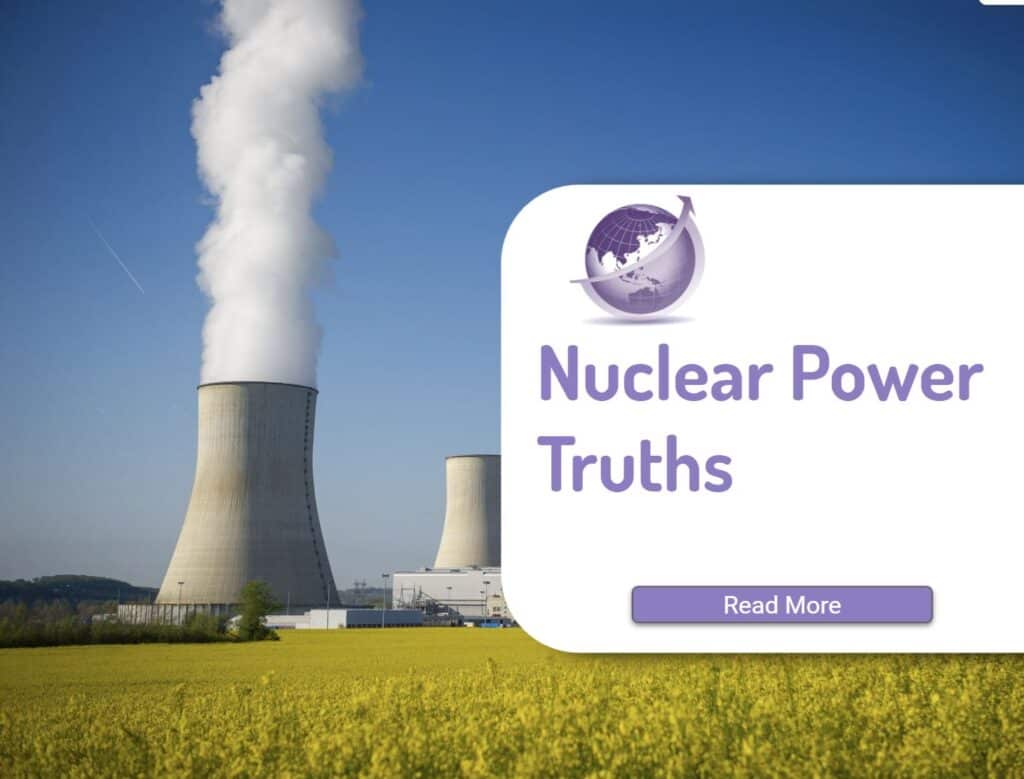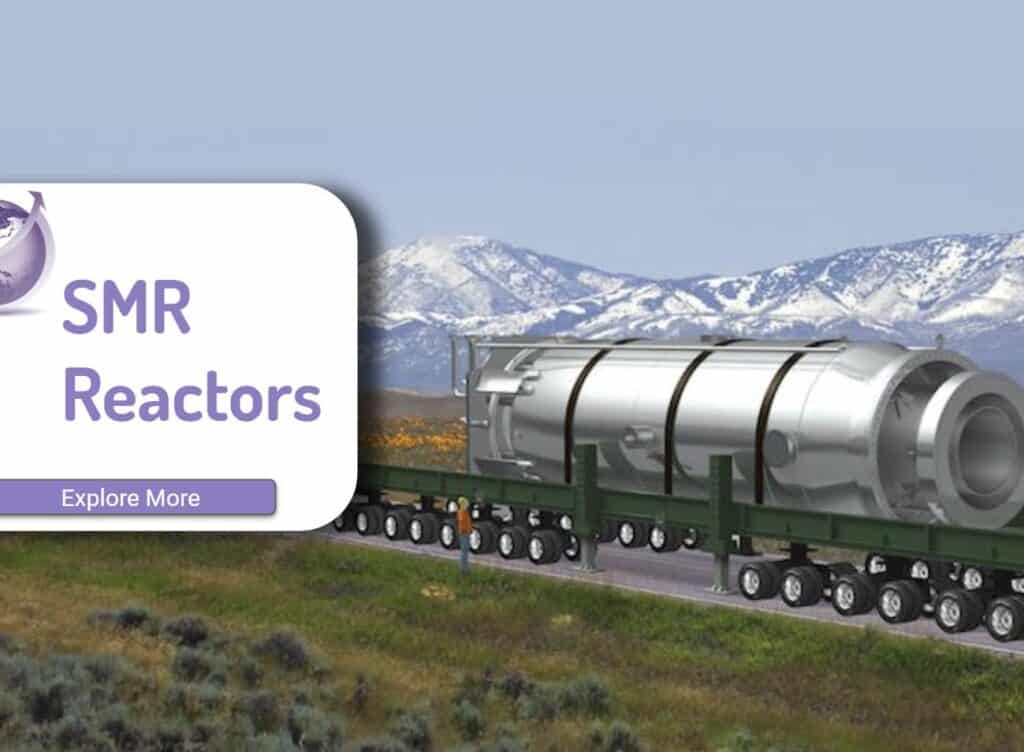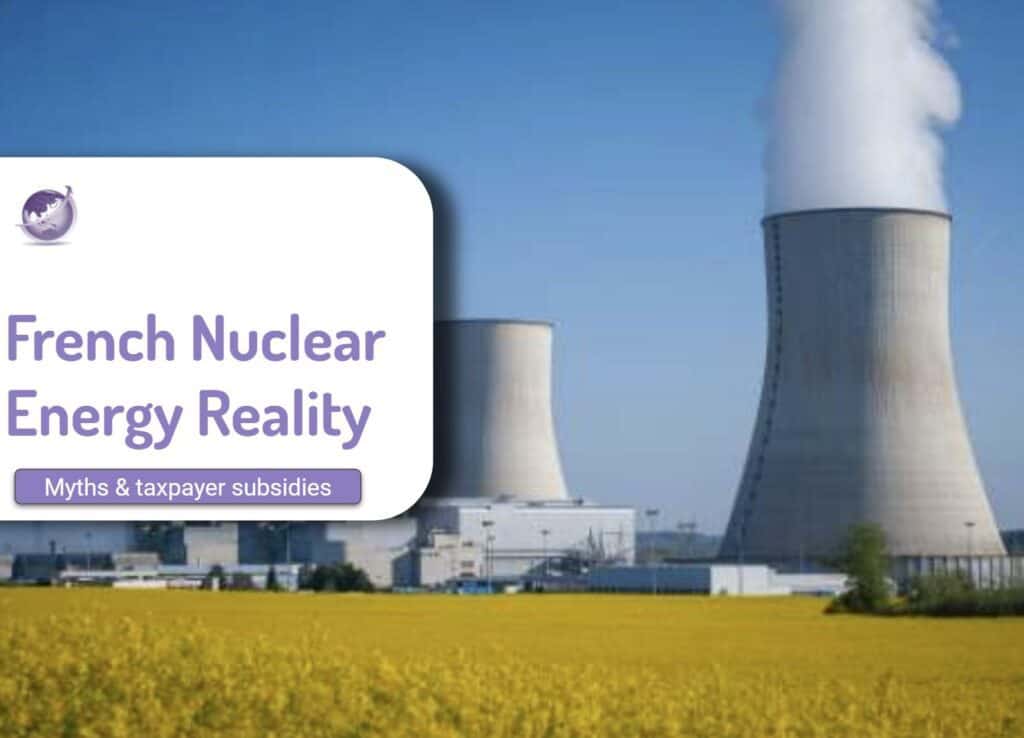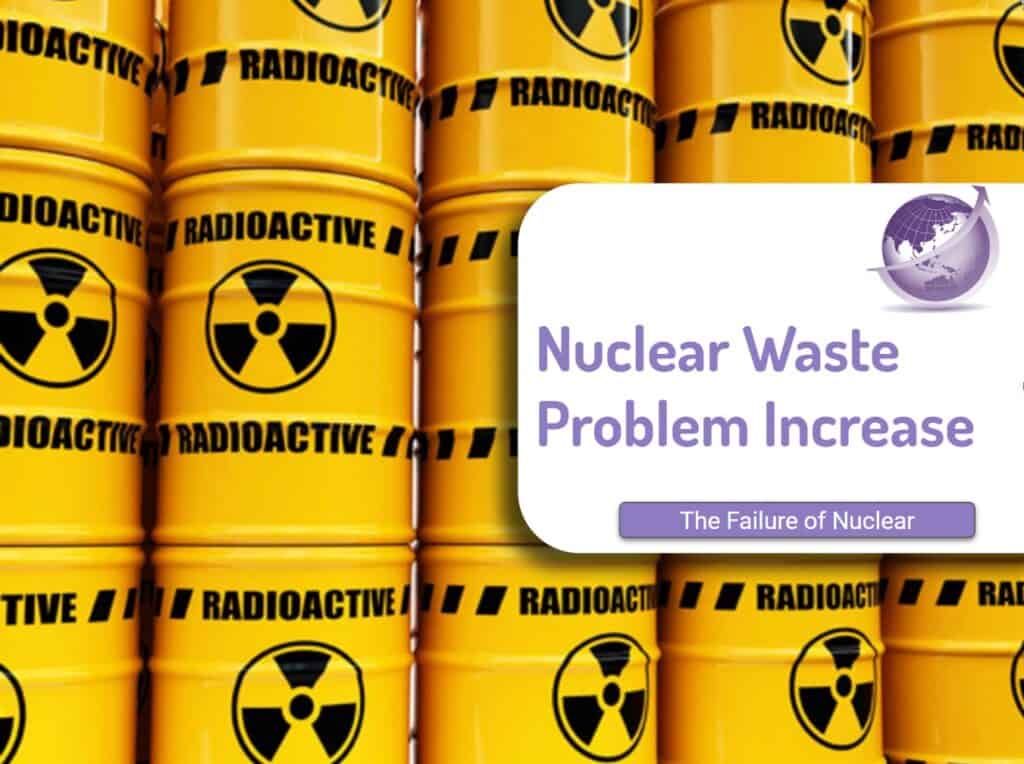The nuclear industry power grab is termed Nuclear Renaissance v 4.0 by Harvey Wasserman and is the centralized corporate power industry’s final grab at mega-sums of public money and total control of energy. In this hard-hitting article in Counterpunch – read in full to get the absolute folly of how the nuclear industry is having a last grab for obscene subsidies. There are 5 arguements Wasserman raises.
Facing a definitive tsunami of cheaper, cleaner, safer, faster-to-deploy renewables, it’s meant primarily to serve the nuclear weapons complex while insulating entrenched centralized power against distributed green social democracy.
Harvey Wasserman Nuke Power’s “Renaissance 4.0” Has Already Melted
Total Electricity Generated Unchanged from 2003 to 2022

Uninsurable
A major focus of the article is the inability of private insurability against nuclear accidents. He points out the following 5 risks.
- Most nukes were designed in the pre-digital 1960’s and 1970’s.
- Dangerously decayed
- Average age of about 40 years
- Seriously under-maintained
- Inherently unsafe.
None have private accident insurance. A major meltdown / explosion threatens millions of lives and economic harm. Check out the costs that governments have worn for plants globally.
Existing reactors are so complex that it is impossible to calculate the odds of when the next will explode next.
Wasserman challenges any proponent of nuclear to personally insure any new plant.
The UK has a $2billion liability for Hinkley C, but Fukushima is estimated to cost $200 billion. What is the real liability for Hinkley?
Financial Disasters for Last 8 Reactors
The cost overrun and public money spent is highlighted in this Change Discussion article here.
- Finland Oikiluoto – billions over budget and 12 years late. Recently had to be idled as wind energy was too cheap
- Vogtle in Georgia (2 of them) 7 years late. Double the cost at $34 billion up from an initial $14b estimated. The cost of power is 6-8 times higher than wind and solar (https://o.canada.com/pmn/news-pmn/georgia-nuclear-rebirth-arrives-7-years-late-17b-over-cost)
- Hinckley C (2) more than £32 billion and now not until 2028
- Flamanville France
- Sumner – cancelled after $10b of construction
Build Time Blowout
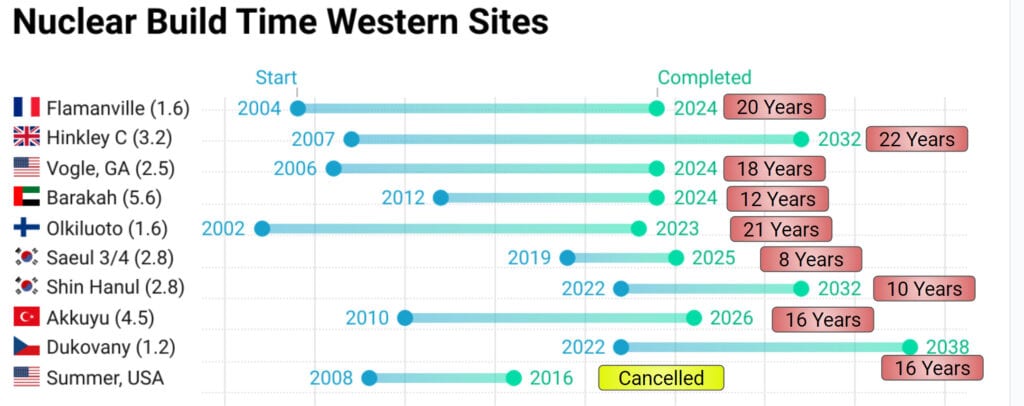
Build Costs Exceed $US8bn or $AU12bn

Multiple Safety Risks and Events
Globally, there have been at least 99 (civilian and military) recorded nuclear power plant accidents from 1952 to 2009 (defined as incidents that either resulted in the loss of human life or more than US$50,000 of property damage). The International Atomic Agency reports over 3,600 incidents.
Wasserman points out that
- California’s Diablo plant is riddled with structural damage but is also in an Earthquake zone, yet receiving billions to extend life for 5 years
- Intake pumps froze in Texas
- Every one of the 400+ reactors suffers individual safety events which may be minor or could lead to deadly consequences
- France has suffered severe maintenance issues. As a poster for the nuclear industry – check out this article about misinformation about France’s nuclear.
Thus the “nuclear issue” that matters most is which old reactor will blow next…and when.
Harvey Wasseman
Uranium Supply
Over 40% of uranium supply comes from Russia or its territories.

Enrichment and Sovereignty
The US and its European allies moved fast to choke exports of Russian oil, natural gas and coal after Vladimir Putin ordered troops into Ukraine. When it comes to atomic energy, however, Kremlin-controlled Rosatom Corp. continues to be the dominant source of fuel for the world’s nuclear power stations — supplying about half of global demand for enriched uranium. France, Germany, Netherlands UK, Russia and USA are other major producers.
| Company | 2020 | % Capacity | 2025 | 2030 |
|---|---|---|---|---|
| CNNC | 6300 | 10% | 11,000 | 17,000 |
| Orano | 7500 | 12% | 7500 | 7500 |
| Rosatom | 27,700 | 46% | 26,200 | 24,800 |
| Urenco | 18,600 | 31% | 17,300 | 16,300 |
| Other | 66 | 0% | 375 | 525 |
| Total | 60,166 | 100% | 62,375 | 66,125 |
Not Emissions Free
A life cycle analysis shows nuclear has more emissions than solar and wind and furthermore Jacobson argues that the opportunity cost of the 15 years to build a plant means the plant never catches up with even gas-peaking plants.
| Fuel Source | gCO2e/kWhe | Notes and Explantion |
|---|---|---|
| Wind | 5-8 | Most emissions from construction steel and concrete |
| Nuclear | 6-110 to 200 | Mining and enrichment markedly change emissions. As rich ore bodies are mined out, more energy is needed for less rice ore bodies.80 years of supply left. |
| Solar | 38 | Using Maxeone 40 year panels and Fronius inverter 8kW |
| Gas | 500 | Fossil methane |
| Oil | 800 | Bunker oil and oil fired boilers induce a range of other pollutants |
| Coal | 1000 | Calculation of emissions from mining may underestimate total emissions by 2 or more times |
Opportunity Cost of Nuclear Construction

Vogtle nuclear will never pay off the CO2 & pollution emissions it has already caused to be emitted into the atmosphere, since it not only allowed 15-18 years of such emissions, but it prevented the construction of 6-7x the energy-output-equivalent of wind solar and batteries.
Weaponisation of Nuclear
Most countries have moved from energy use of nuclear to a source of uranium and expertise to weapons. Nine countries possessed roughly 12,500 warheads as of 2023 (Federation of American Scientists) with the USA and Russia possessing about 86%.
Small Modular Reactors = Nuclear Renaissance?
The much-hyped SMRs do not yet exist. And won’t until the early 2030’s For a full discussion on SMR check out this article. Tge hype generated by billionaires (Gates and others) is not warranted when it is expected that the cost of electricity will be higher, the waste increased and carbon emissions increased. Moreover, current designs will need more enriched fuel source; and who has that? Russia.
NuScale and UTMPS Project
For an example of costs, look no further than NuScale and the Utah Associated Municipal Power Systems (UAMPS) project. In January 2023, they announced the costs of a 462-megawatt small modular reactor (SMR) had risen dramatically. As Michael Liebriech says when you adjust the quoted $89/MWh for the $30/MWh IRA money plus $1.4bn in direct subsidy, by his calculations that’s a projected LCOE of $129.50/MWh in 2022 money. With every chance it will climb to $240 or more. With no allowance for waste or insurance. That is 6 times wind cost at $40. With seven years before construction is complete.

Renewable Energy Generates More than Nuclear Today
But as illustrated in the works of Amory Lovins (The Road Not Taken), Mark Jacobson (No Miracles Necessary) and many many others, there is zero doubt that renewables, efficiency and storage can move our economy to carbon-free, saving billions of dollars and creating millions of jobs.
Harvey Wasserman Nuke Power’s “Renaissance 4.0” Has Already Melted
The question is When
Wasserman expands on the current USA Inflation Reduction Act and how some of the largess of nuclear provisions simply extend the life of nuclear at a huge cost to both consumers and taxpayers.
Scathing Analysis
Allison Macfarlane who was Chairman of the NRC from 2012-2014 has a scathing article here in Renew Economy “The end of Oppenheimer’s nuclear energy dream: Modular reactors supported by ideology alone”.
Coalition Senators’ Dissenting Report
A number of Australian Coalition Senators rehashed information for pro-nuclear political statements in this dissenting submission.


